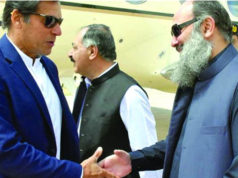By Adnan Aamir and Joanna S. Kao
One of our favorite definitions of accessibility comes from Karen Stevens, the accessibility lead at EA Sports: “Disability is a mismatch between a person and their environment. Accessibility is the correction of this mismatch.”
The term “disability” doesn’t just describe a permanent state. The need for accessible content and interfaces can also be temporary or situational. Consider the following situations in which you might want to consume media:
In a noisy room or subway where you can’t hear a video on your phone
In class or at work, wanting to watch a video without your entire office or lecture hall knowing
While holding hands with a child
While driving
With that broader definition, accessibility is an issue that should be considered across all parts of an organization. It can be easy to see accessibility as a “technical” or niche topic that only applies to a small group of people, but—particularly in journalism and media—the need for accessibility is much broader. Nowadays, readers are overloaded with information. There is stiff competition among the media content producers to get readers’ attention. A reader or viewer will only lend his or her attention to media content when it’s engaging, which is only possible when the content produced is accessible.
Accessibility isn’t just relevant to designers and developers, though—it is also relevant to the people who create content, sell it, and deliver it to their audiences.
For example:
Does your newsroom do live events? Are those events accessible?
Are you interviewing your sources in a setting that allows them to best express their thoughts?
Are your print fonts legible?
How can you reach audiences who don’t have reliable internet access?
How do you reach communities with low literacy rates?
How can you translate stories so that people can read them in their native language(s)?
This issue is also critical because, in certain places, accessibility is required by law. Failing to provide accessible content can lead to legal penalties.
Our Mozfest session focused on three very different areas of accessibility: creating accessible content, reaching audiences with internet connectivity issues and connecting with young audiences.
Creating Accessible Content
In a nutshell, creating accessible content means expressing and displaying information in a way so that audiences can understand it using whatever method they consume information best.
For written text, it means avoiding jargon or providing ways of getting more context if jargon is unavoidable
For images, it means providing text descriptions
For audio and video, it means providing audio descriptions or transcripts
For web pages, it means using proper markup so that assistive technology can understand it
For data, it means giving readers ways of summarizing, visualizing or sorting data on their own
Creating accessible news content can be particularly challenging because of its unpredictability and how quickly it can change. Though there are a number of good general accessibility resources online, not many address the specific challenges of creating news content, especially on a deadline.
Both the BBC and Vox have created accessibility guides, particularly for creating digital content and interfaces. The Vox guide is especially useful—though not comprehensive—with clear guidelines (and links out for more information) written out for designers, engineers, project managers, QA and editorial teams. These guides can be useful when creating story templates (which is particularly helpful on deadline) and when experimenting with new storytelling formats.
Considering Connectivity
Not every country is blessed with reliable internet connectivity. The internet facilitates day-to-day activities all over the world, but it’s still a luxury in some places, particularly in developing countries. Some areas have low bandwidth and experience frequent disruptions, while others are only given limited times of access. As a result, readers in a major part of the globe are automatically in a position of disadvantage when it comes to viewing rich web content.
One solution is to make content available for offline download. People often have limited time to access the internet, which restricts the amount of media content they can consume. This problem can be solved if websites allow such users to download the content for offline reading and viewing. Readers will be able to access the content on their own time.
Creating lighter version of websites is another solution. Facebook Lite, Facebook Instant articles and Accelerated Mobile Pages (AMP) are a few example solutions from Silicon Valley. NPR’s text-only website is an example from news media. Users with good-quality internet should have the choice of viewing the heavier, richer version of apps and websites, but systems can be designed so that only lighter versions are shown to low-bandwidth users.
In some developing regions of the world, even the text messaging social media platforms can provide solutions. WhatsApp groups are used to combat the connectivity problem in Balochistan, which is a remote province of Pakistan, a developing country in South Asia. Balochistan is definitely an area where internet users face connectivity problems. WhatsApp is a cross-platform messaging service that does not require high bandwidth to function. As a result, the group function of WhatsApp is used to share media content to a growing user base in Balochistan. Media organizations and journalists share their media content on WhatsApp groups where they get copied and shared on hundreds of such groups across the province.
The problem with this solution is that only text and low-resolution images of stories can be shared. This is a sacrifice that has to be made in low-bandwidth regions. But the main purpose is still served by disseminating the information to the readers in a remote province with poor internet connectivity.
Reaching Young Audiences
One particular issue many news organizations are facing now is how to reach young people. Many legacy news organizations, especially broadcast networks, have demographics that skew older. But to stay relevant and in business, communicating information effectively to younger audiences is key.
Jargon and outdated interfaces can make news feel irrelevant, unfriendly and inaccessible. There are many ideas from education, civic media, and digital youth work that can be used in the news industry—a group of Finnish participants at Mozfest shared an example of city council decisions communicated in the form of memes for younger audiences.
To successfully implement these ideas in the news industry, young people need to be supported and encouraged to participate. News websites and applications can have dedicated sections for their younger audiences where major news stories are reproduced in simpler and concise form and where young people guide their implementation. To make this happen, news organization need to hire people who understand young people—or young people themselves—and can translate media content into their formats and languages.
At the Financial Times, a sixth former (or high schooler) developed an idea to get more of his peers to read the Financial Times. The FT worked with him, his peers, and his school to develop the idea, and now thousands of high school students around the UK receive a free subscription and weekly emails specifically curated for younger readers by FT journalists and a panel of teachers.
If you are interested in joining the conversation, please join the #accessibility channel on the NewsNerdery Slack channel (newsnerdery.slack.com). We’d also love to hear from you -you can reach us at Adnan Aamir (@iAdnanAamir) and Joanna S Kao (@joannaskao).
You can find additional resources on the FT’s accessibility tipsheet.
Many thanks to the Mozfest 2017 participants who largely drove our discussions at the conference and shared many of the problems and solutions shared in this article.
Originally published in Source portal of Open News.
Share your comments!








